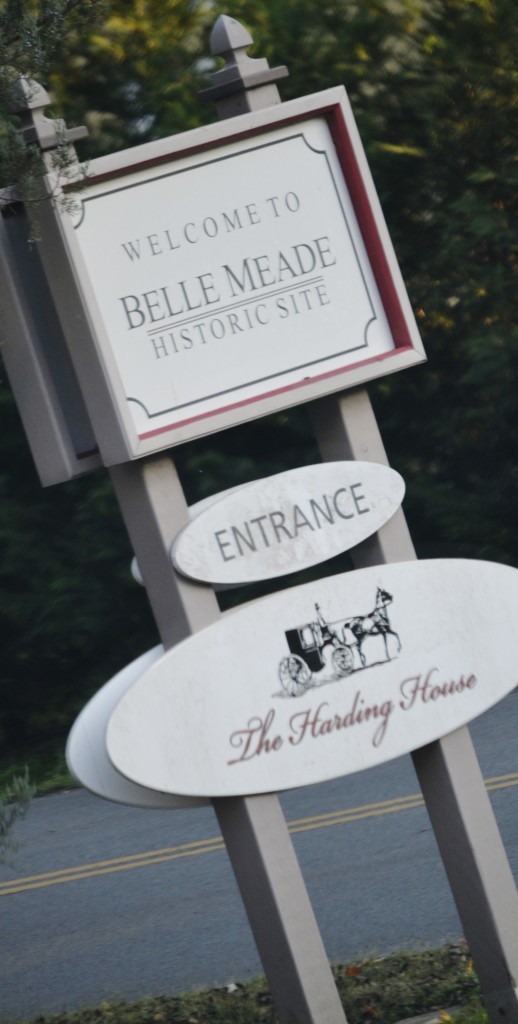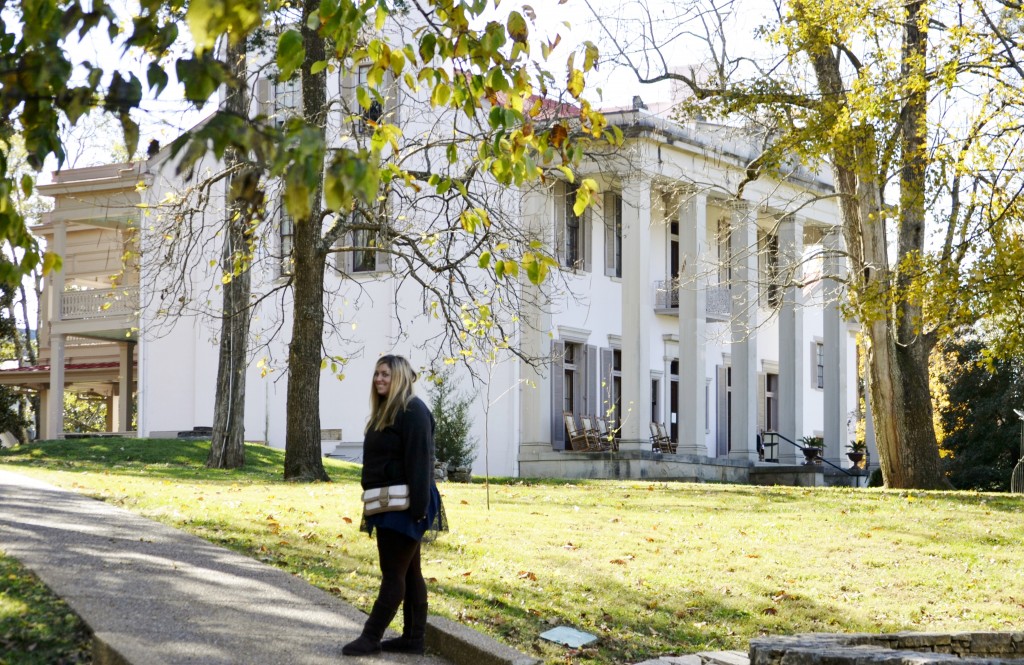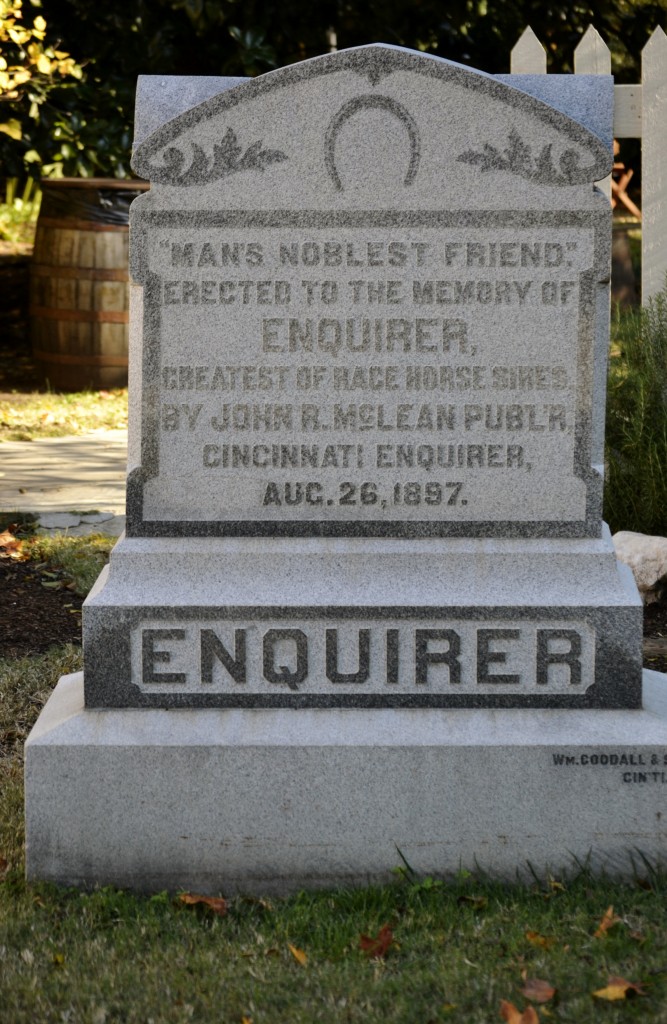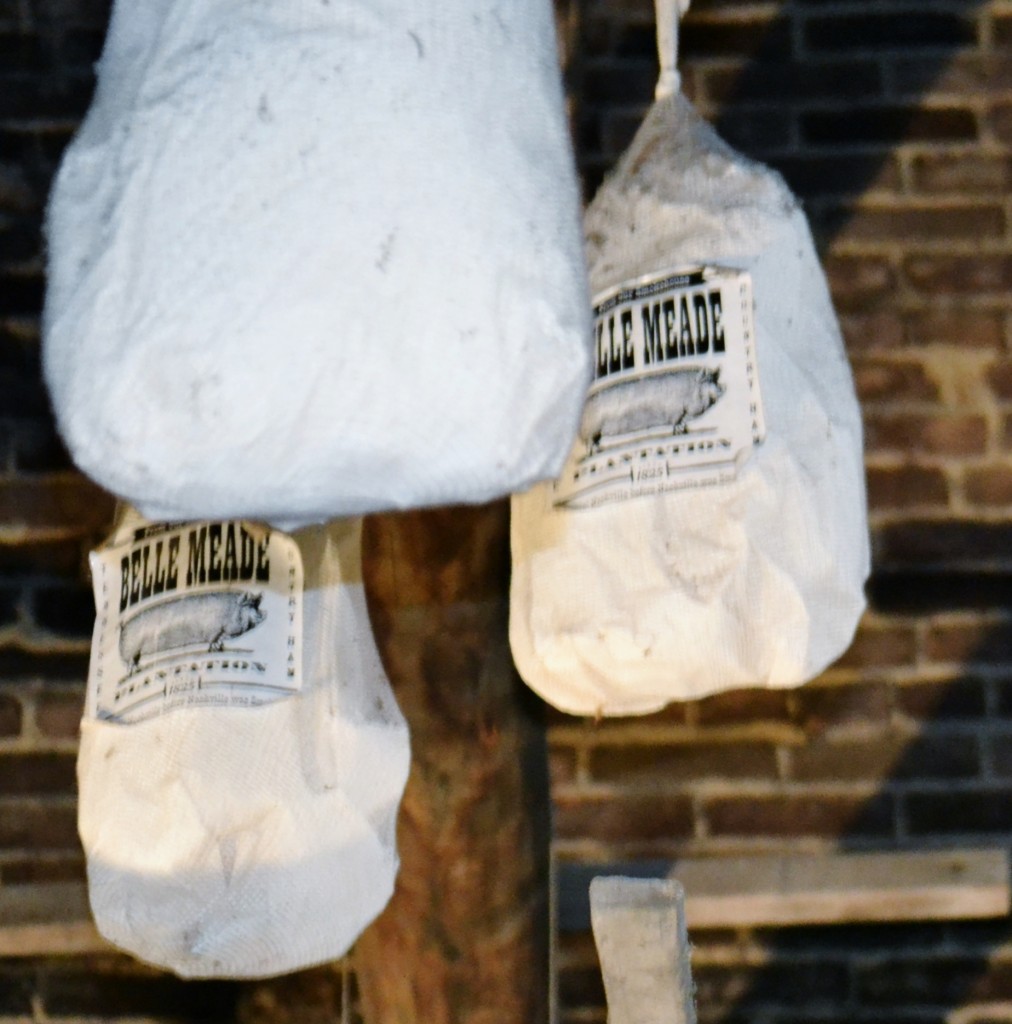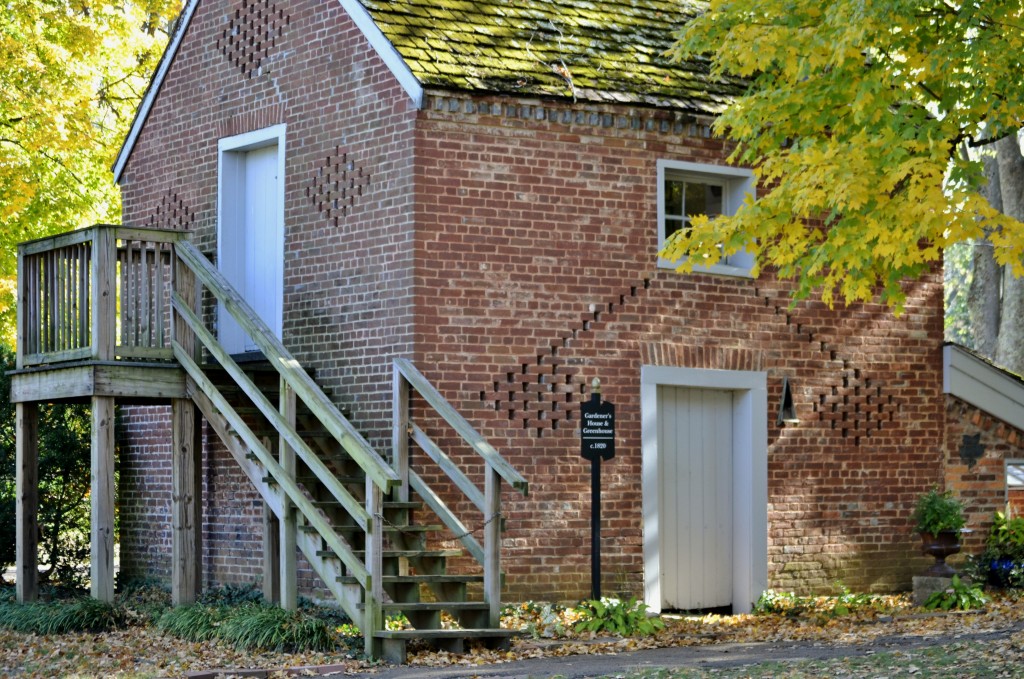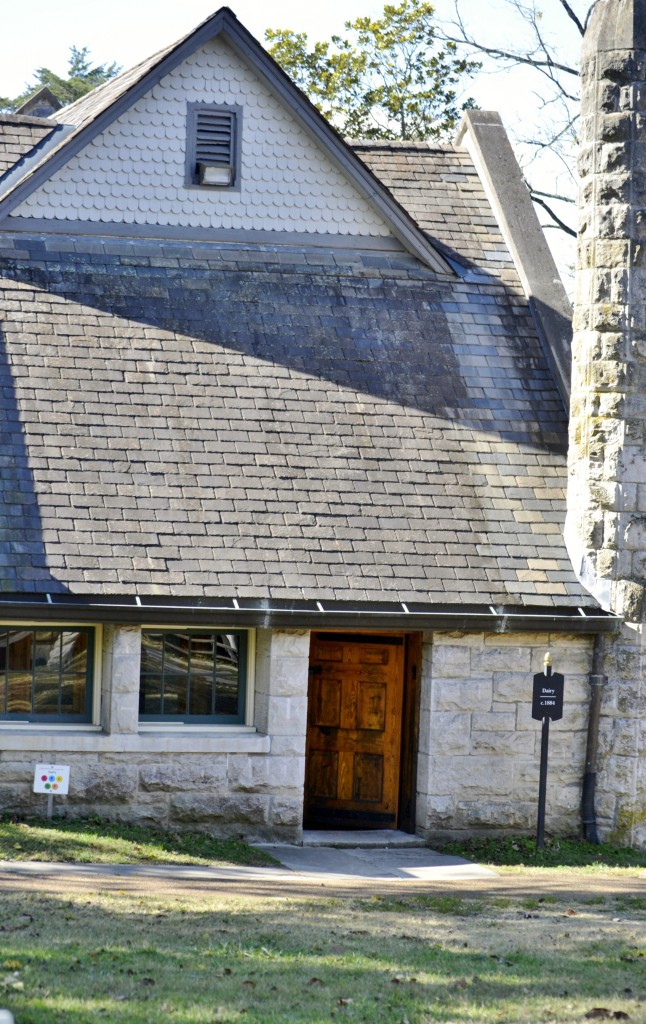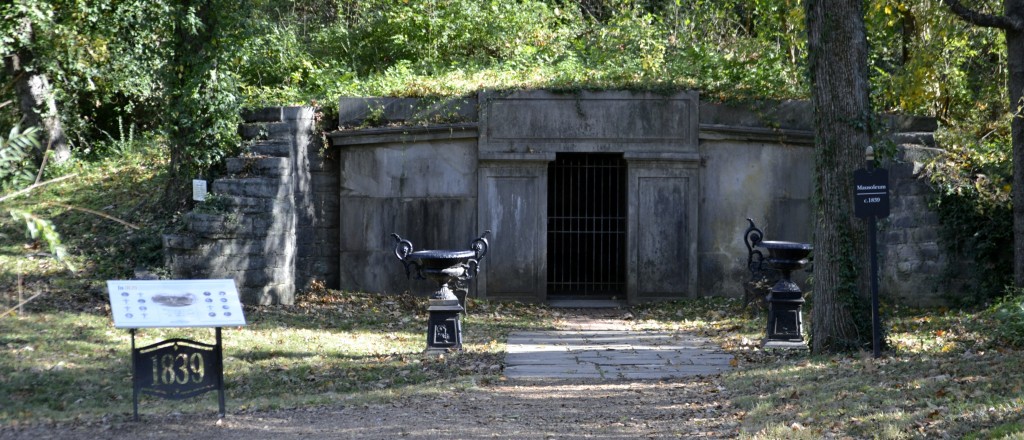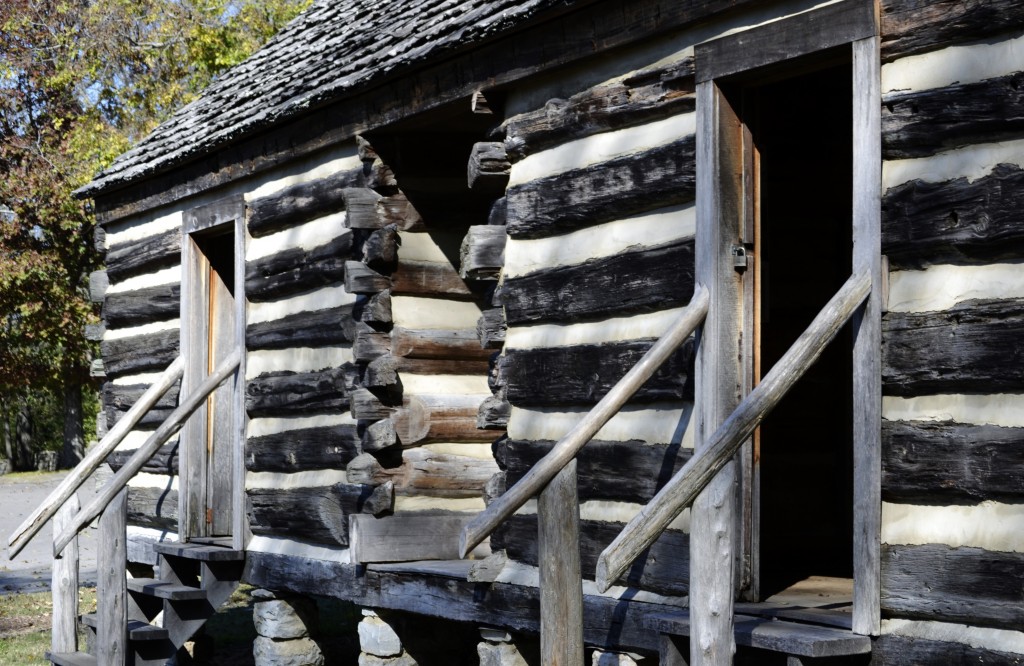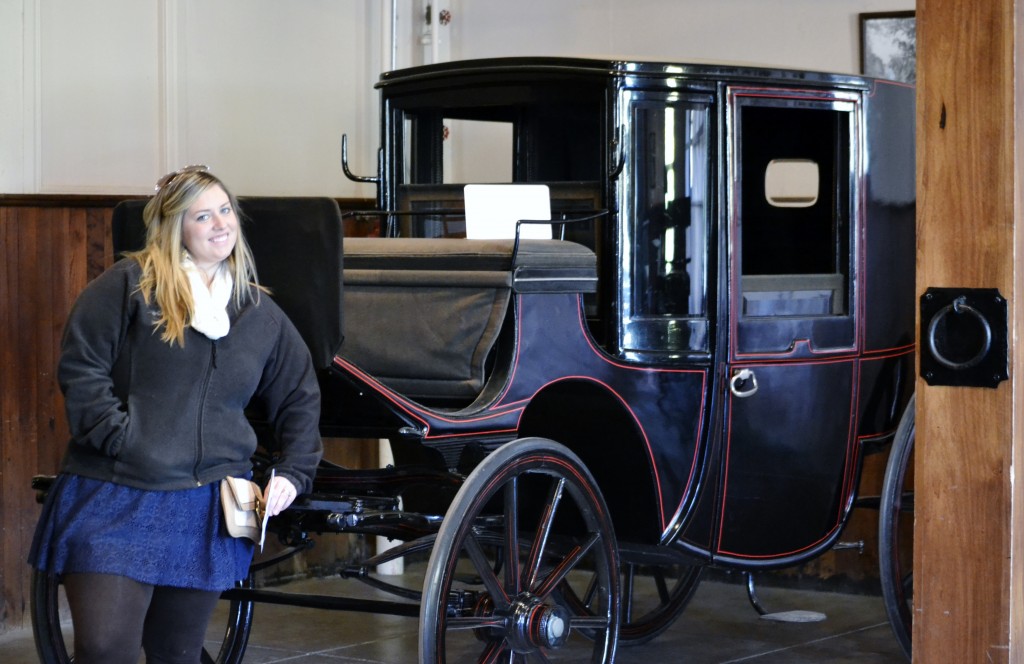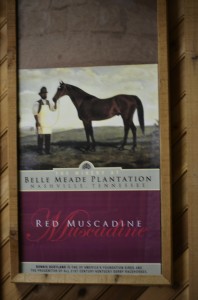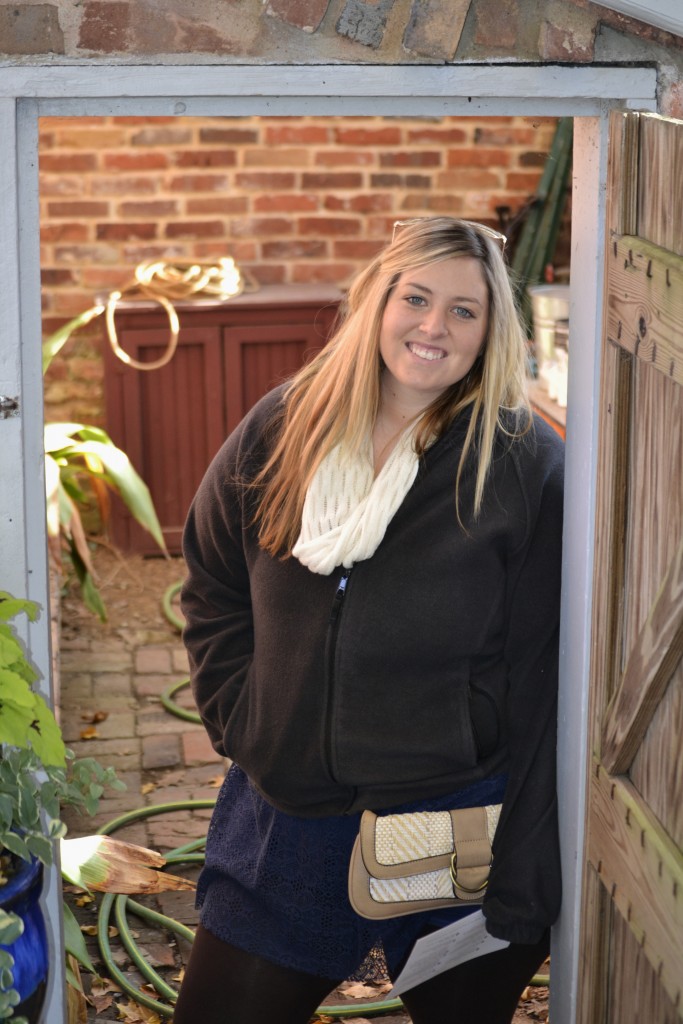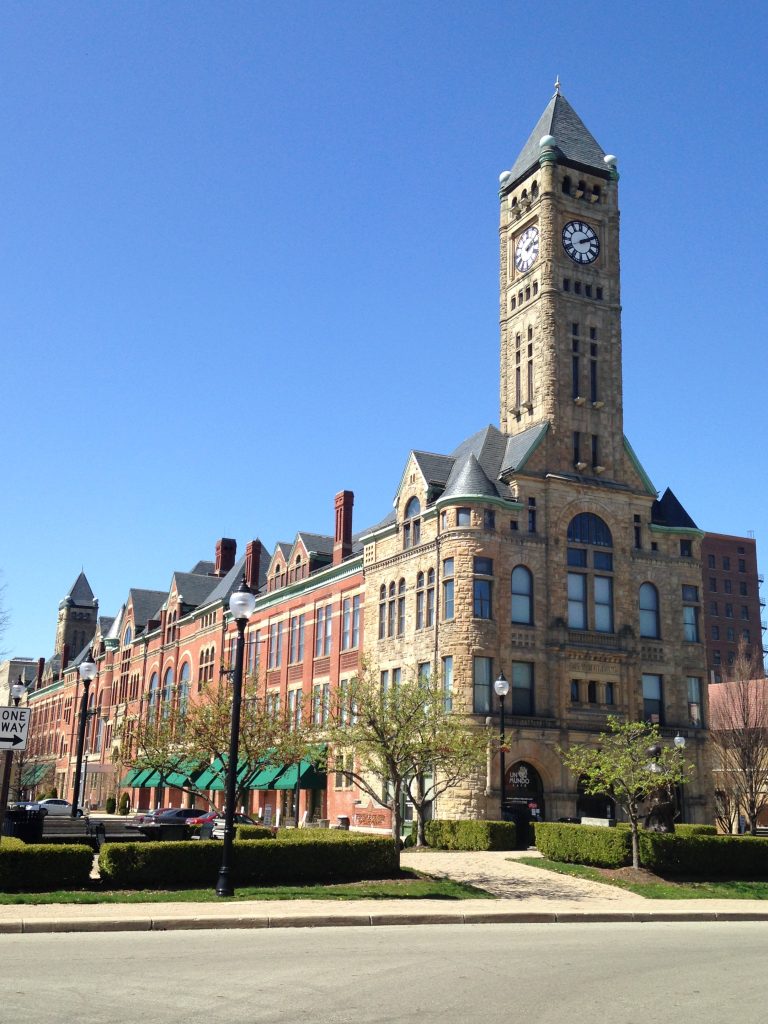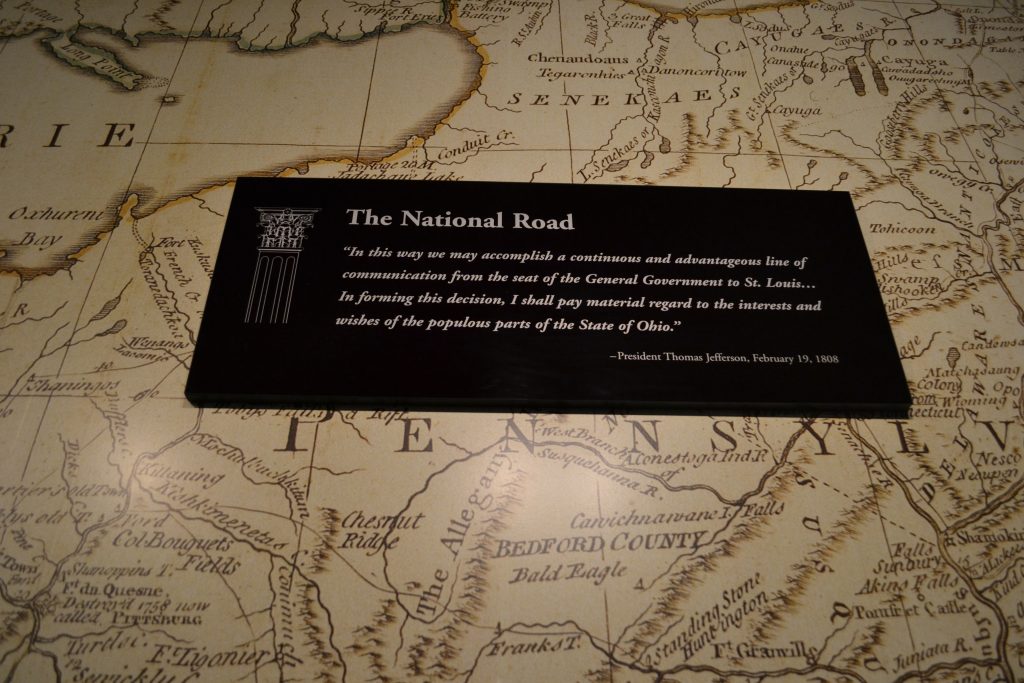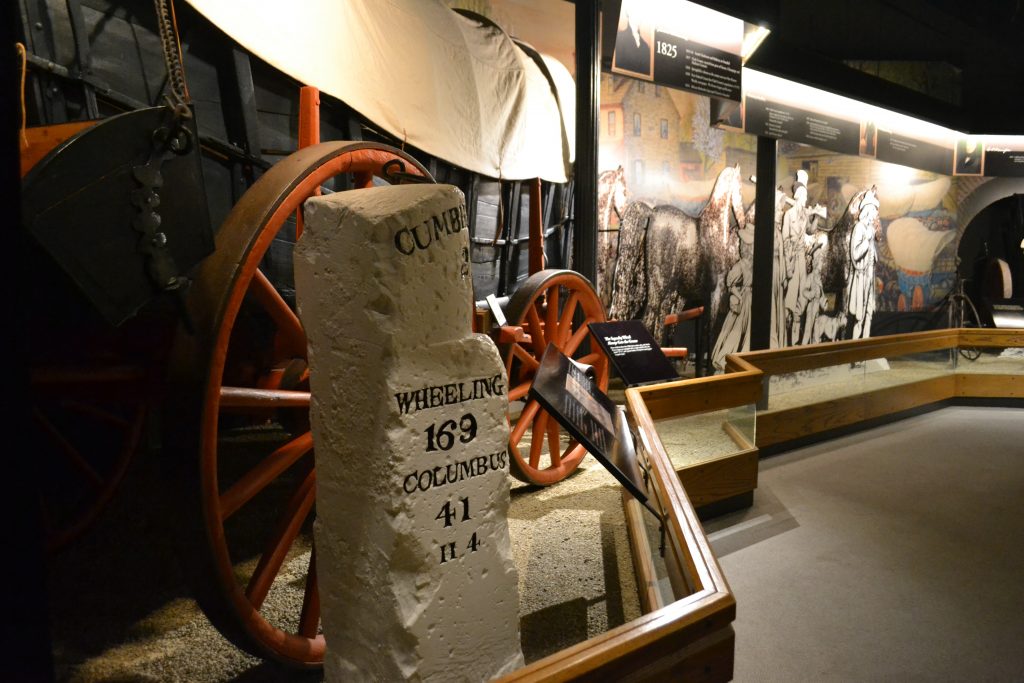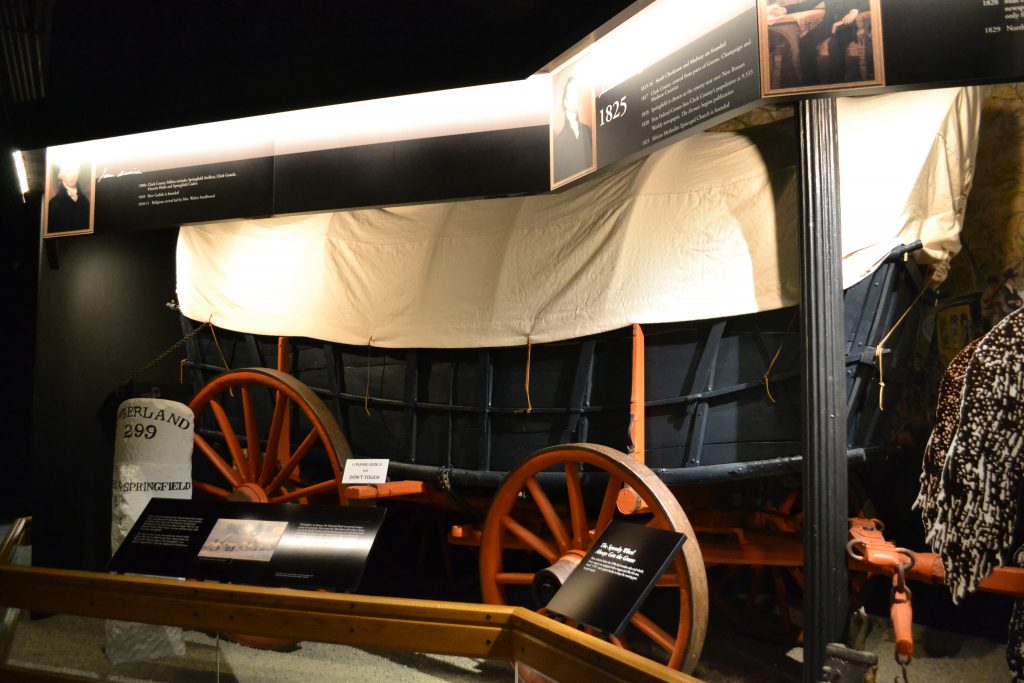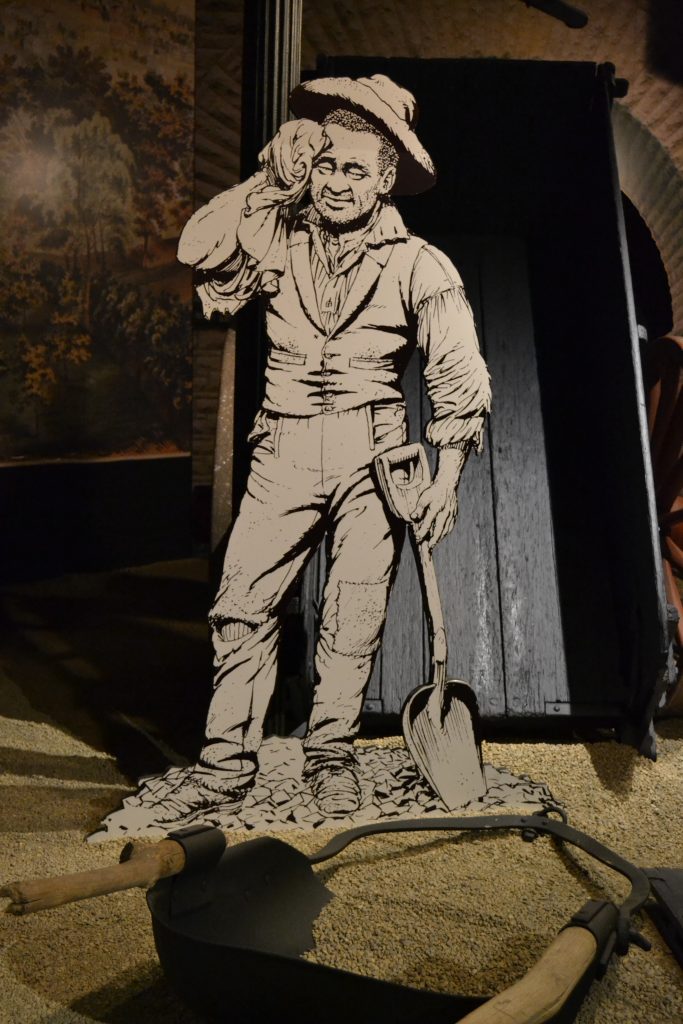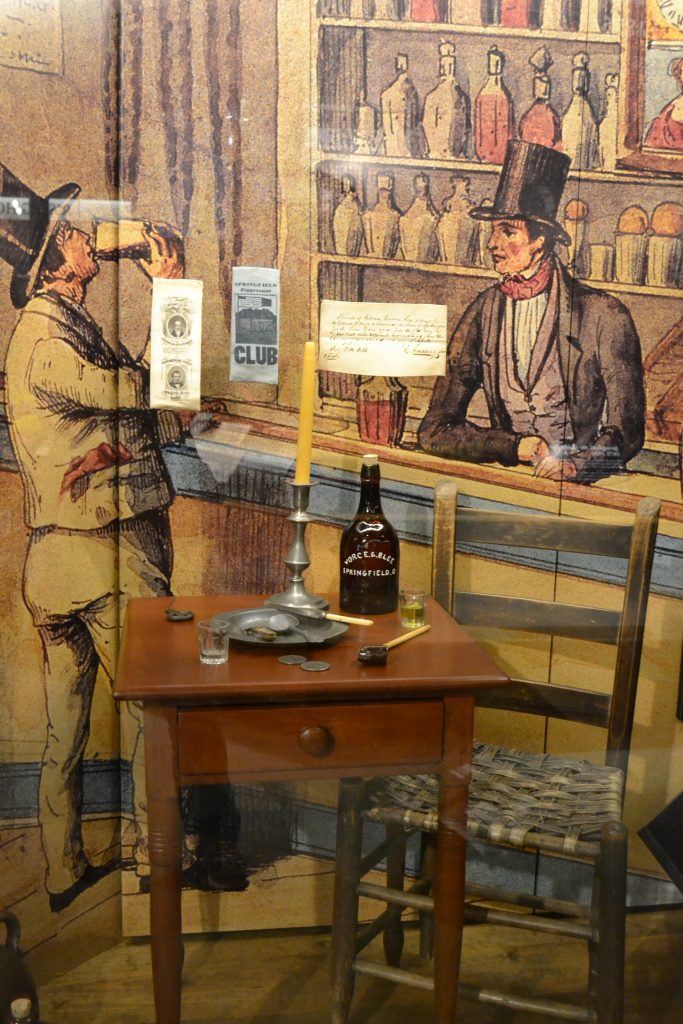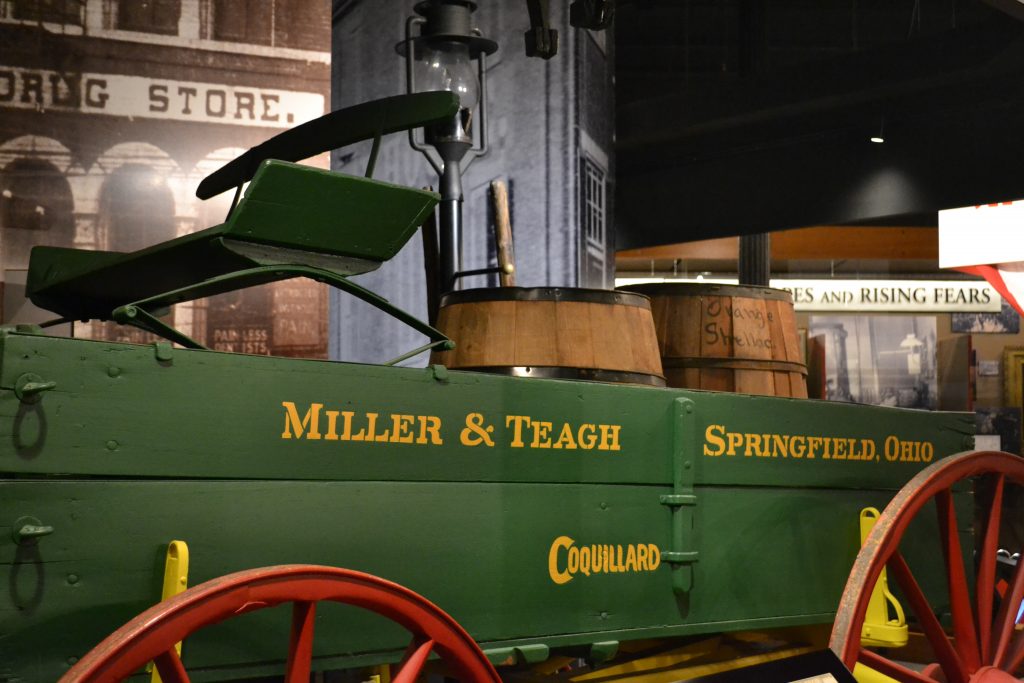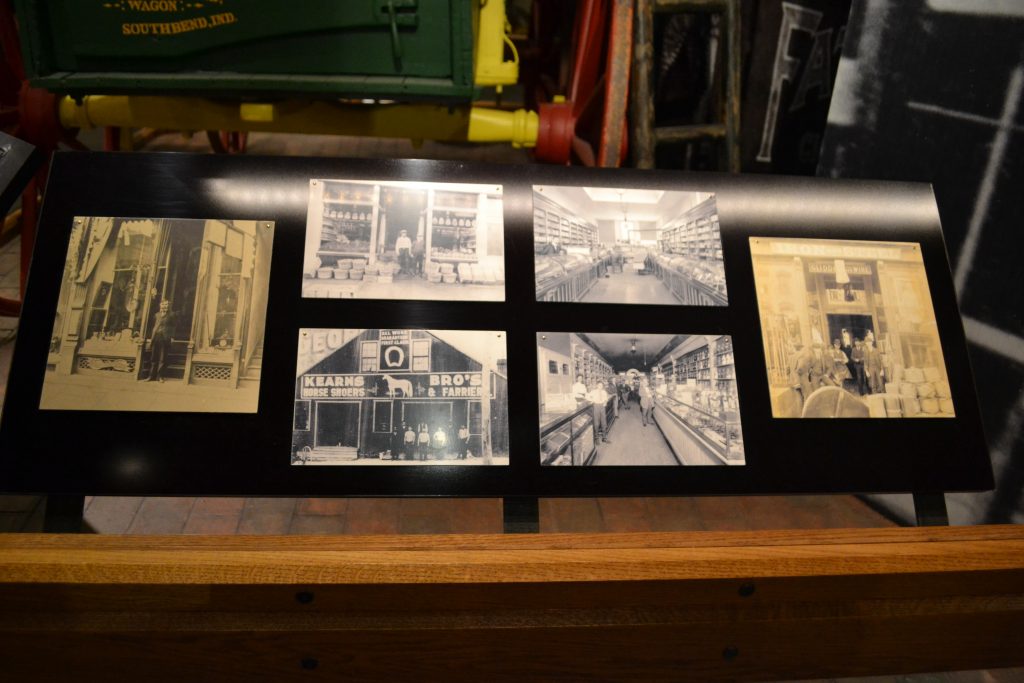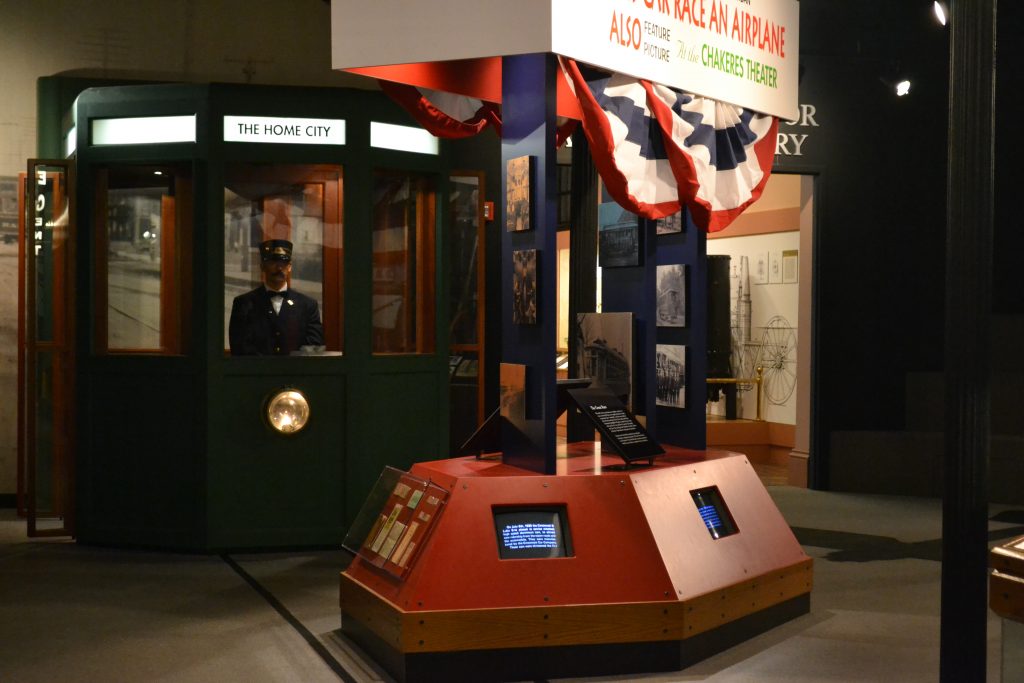Updated September 13, 2024
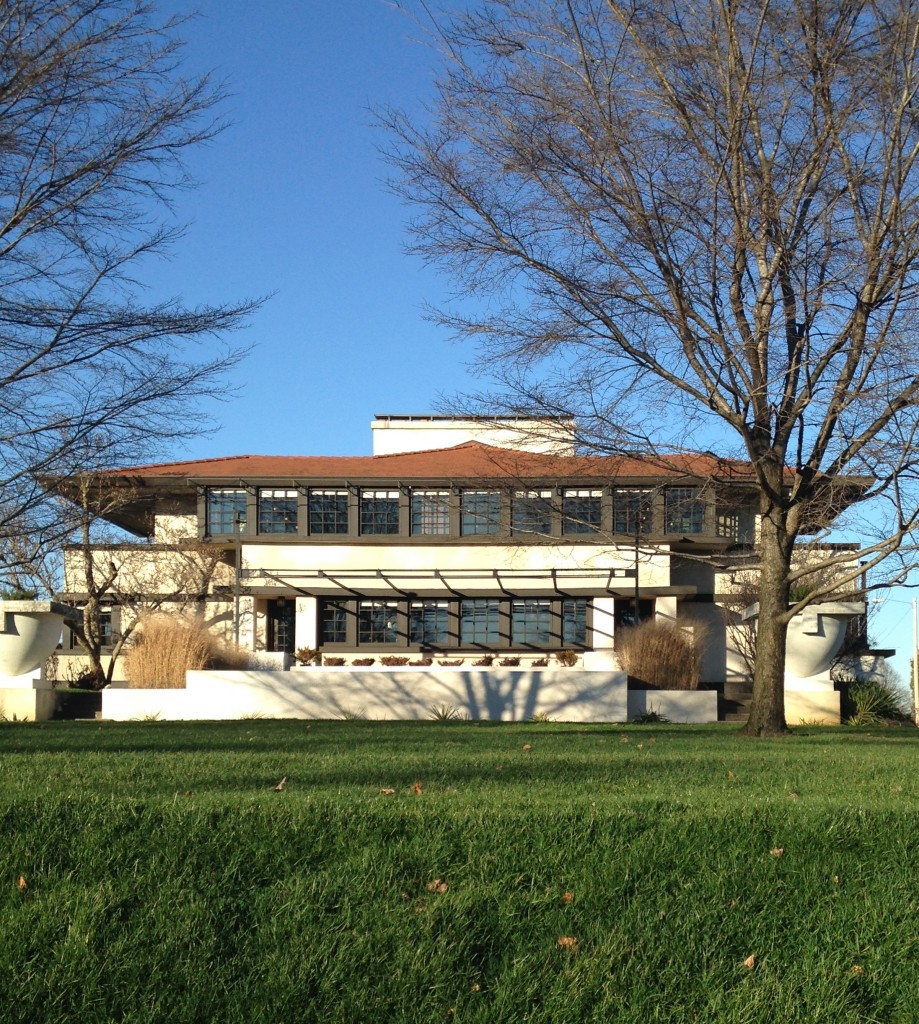
Frank Lloyd Wright is credited with designing over four hundred homes, commercial buildings and other works to include The Westcott House located in Springfield, Ohio. An architect with a vision beyond his time, Mr. Wright’s designs and influence have made him one of the most famous architects in the world. The Prairie-style home was designed by Frank Lloyd Wright for Burton and Orpha Westcott, completed in 1908. After many years of decline, the home was purchased by The Westcott House Foundation in 2000 and a $5.8 million dollar renovation ensued. From the restoration to the home’s structure and architecture, the foundation has also focused on bringing back the furniture and restoring the gardens during the time of the Westcotts. The masterpiece was opened to the public for tours beginning in 2005.
As visitors enter the museum through a side entrance from Greenmount Street, they will find a gift shop as well as a small cinema in the area of the home that was once the garage. The Visitor’s Center displays various items that showcase the architectural designs of Frank Lloyd Wright and are available for purchase. The tour was led by docent Mary Ellen who provided a thorough overview of The Westcott House, Frank Lloyd Wright as well as the Westcott family.
Having moved from Richmond, Indiana, Burton Westcott became a prominent resident of Springfield due to his successful career in the automobile industry. It would be his wife, Orpha, having come upon the architecture of Frank Lloyd Wright, who would commission him to design and build their home. Jeanne, the oldest of the two Westcott children, lived here until her marriage to Richard Rodgers. John, born in Springfield in 1903, would live in Italy to attend Montessori School for his education and return home until his parent’s passing in the 1920s. At the time of Orpha’s untimely, tragic death, Burton’s automobile business was in decline. His attempt to save the failing venture would be unsuccessful and lead to a decline in his health resulting in his death in 1926.
The Westcott House is considered one of Wright’s most significant homes as it was designed after Wright’s visit to Japan. There are various features in the residence from its furniture to the light fixtures that suggest this Japanese influence. With a total of sixteen rooms, the home was built to accommodate the Westcott’s love of entertaining. From its exceptional living room and fireplace to its exquisite dining area, the blueprint also included a reception space for receiving their guests.
Throughout the home, Wright’s emphasis on drawing one’s eye to a horizontal perspective is exhibited by the skylight and dining room. From the stonework to the fireplace to the chimney, there is beauty in Wright’s use of organic architecture referred to as Wright’s First Golden Age, a style which ran from around 1893 to 1910. Wright’s Prairie-style construction of the Walcott House is very similar to the Robie House in Chicago.
There are so many exciting aspects of The Westcott that one finds intriguing to include the use of cantilevered overhangs applied to the low-pitched roof of this home. From the French doors that lead to the pergola to the wrap around windows, Wright consistently incorporates the use of natural light and nature to the interior of his architecture and designs as seen in the earth tones and textures exhibited throughout the home.
Wright had a love for the dramatic. While the living spaces were more modest, it was the public, entertaining spaces that were the focal point of the home and the most fascinating. Built in bookcases, seating around the fireplace and a buffet are some of the features of The Westcott House that showcase his incredible talent. The design of the dining room table is also somewhat intriguing. At each corner, Wright included a tower-like lighting structure to increase illumination to the room.
The tour ended in the garden of the home where the metal works and awnings of the exterior could be explored. The gardens are beautiful in the spring and summer when the flowers are in bloom. It would have been a perfect outdoor space for the Westcott children.
A visit to The Westcott House includes a guided tour of the public spaces of the home such as the library, the family room and the dining room. The private living quarters include the kitchen and pantry, the maids’ rooms, Burton and Orpha’s bedrooms, closet space and powder rooms as well as the rooms of John and Jeanne, the Westcott Children.
The Westcott House is located in Springfield, Ohio on the corner of Greenmount Avenue and High Street. You can find the location on your GPS by entering 85 South Greenmount Avenue, Springfield, OH 45504. There is plenty of visitor parking on Greenmount.
Have you visited one of Frank Lloyd Wright’s properties? I would love to hear about your experience, so leave a message in the comments section below. Happy Travels!
If you would like more information about Frank Lloyd Wright, you can also check out artsy.net/artist/frank-lloyd-wright.
Disclosure: Please refer to our blog disclaimer tab for more information.
What to See and What to Do:
The Westcott House
85 S. Greenmount Ave.
Springfield, OH 45505
Telephone: 937 327 9291
- Admission Fee: Adults: $18 and $15 for Seniors. Free for school groups and Westcott Members.
- Hours: Museum: Tuesday through Saturday from 11AM to 5PM; Sunday from 1PM to 5PM. Closed on the following holidays: New Year’s Eve, New Year’s Day, Easter, 4th of July, Thanksgiving, Christmas Eve and Christmas Day
- Guided Tours: This Frank Lloyd Wright home requires a guided tour to explore the property: January – March: Tuesday to Friday at 11AM, 1PM and 3PM; Saturday at 11AM, 12PM, 1PM, 2PM, 3PM and 4PM; Sunday at 1PM, 2PM, 3PM and 4PM From April – December: Tuesday to Saturday at 11AM, 1PM and 3PM; Sunday at 1PM and 3PM
- Amenities: Bookstore and gift shop, guided tours, video presentation
- Length of Visit: 1 – 2 hours
- Tips for Your Visit: Photography is NOT permitted inside of The Westcott House.
Where to Stay:
Courtyard Marriott Springfield
100 S. Fountain Avenue
Springfield, OH 45502
Telephone: 937 322 3600
Where to Eat:
Heart of Country Gift Shoppe and Teaberries Cafe
1600 E. Leffel Lane
Springfield, OH 45505
Telephone: 937 325 3030
I could spend hours strolling the Heart of Country Shoppe, but when I visit, I can’t wait to have lunch at Teaberries. I always start my lunch with a piece of yummy, moist orange bread. Known for their wide varieties of chicken salad sandwiches, I always revert to the House Favorite, the Midwest Delight, served on a butter croissant. If you have room, try their homemade carrot cake or peanut butter pie.
More favorite Springfield eateries:
- Schuler’s Donuts: Their chocolate cream-filled doughnut is their best seller…”home of homemade”. The bakery has several locations in Springfield.
- Simon Kenton Inn: This historical home is an inn, restaurant and entertainment venue. With great food, I love the atmosphere of the Simon Kenton Inn.
- Guerra’s Krazy Tacos: One of my favorite places to eat in Springfield, Guerra’s is known for their unique gourmet tacos.
- Salato Deli: I love stopping by this deli for their charcuterie board
- Le Torte Dolci Bakery; Located next to the Salato Deli, this European French bakery also serves amazing gelato.
- Mike & Rosie’s Deli: This staple of Springfield is located near the Wittenberg campus and I am extremely fond of their Reuben sandwich.
Where to Drink:
- Mother Stewart’s Brewing Company: Springfield’s only brewery, Mother Stewart’s showcases nine craft beers produced onsite.
What to Read:
- The Book of Springfield, Ohio, 1906, by Springfield Commercial Club
- Springfield, Ohio: A Summary of Two Centuries, by Tom Dunham
- Ridgewood in the Country Club District, by Tamara K. Dallenbach
- Still Standing: A life of pain, adversity and perseverance, by James Cooper
- Hometown Killer, by Carol Rothgeb
Photo Guide for Springfield, Ohio:
- Hartman Rock Garden
- Westcott House, Frank Lloyd Wright House
- Glen Helen Nature Preserve in nearby Yellow Springs
- Heritage Center of Clark County
- Tecumseh Land Trust in nearby Yellow Springs
- Ohio Caverns in nearby Bellefontaine
- Oakes Quarry Park in nearby Fairborn, Ohio
